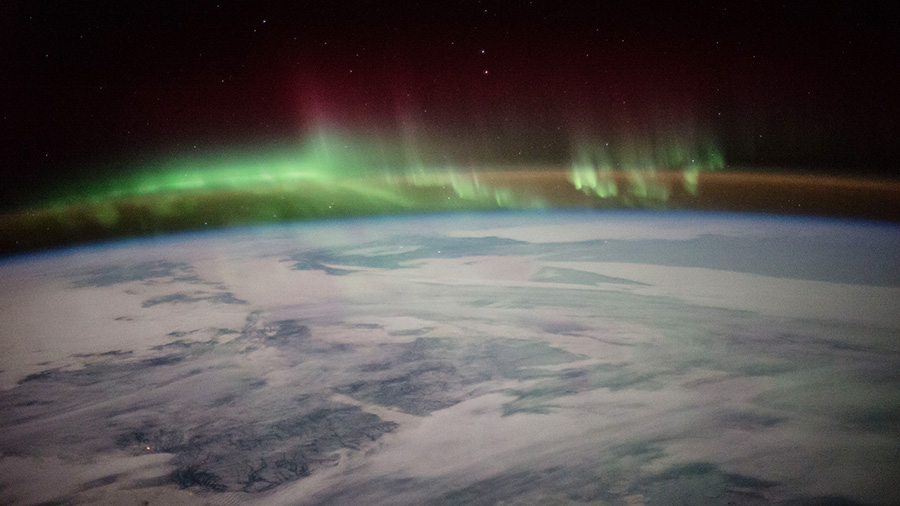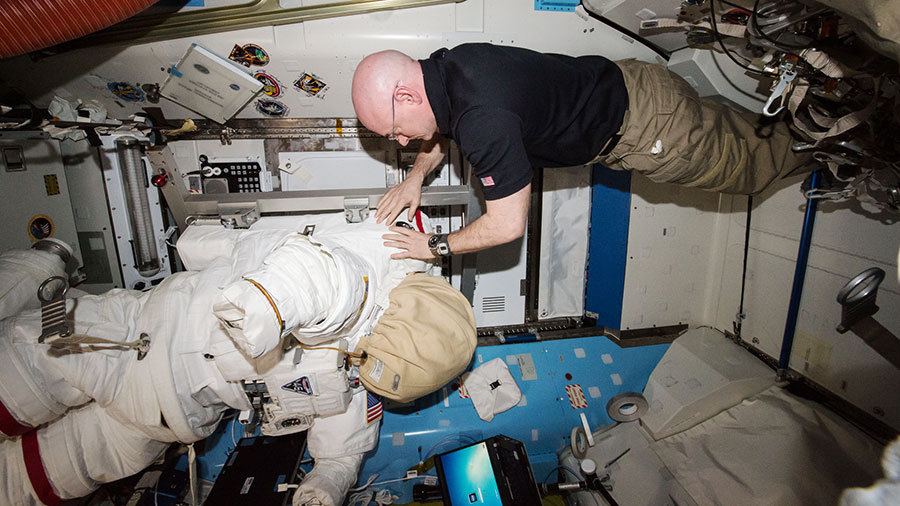
The crew of Expedition 46 was engaged in a variety of repair tasks today across the orbiting laboratory. ESA astronaut Tim Peake replaced cables in the station’s Advanced Resistive Exercise Device, the primary tool for astronaut resistive exercise vital for maintaining bone and muscle mass while in microgravity. NASA astronauts Scott Kelly and Tim Kopra worked to replace key components in the station’s Water Processing Assembly.
Peake also set up units for the NASA Space Automated Bioproduct Laboratory (SABL), which is capable of supporting life science research on microorganisms, small organisms, animal cells, tissue cultures and small plants.
Meanwhile, Scott Kelly and Mikhail Kornienko are just one week away from the conclusion of their one-year mission. The pair are set to land in Kazakhstan at 11:27 p.m. EST March 1.









